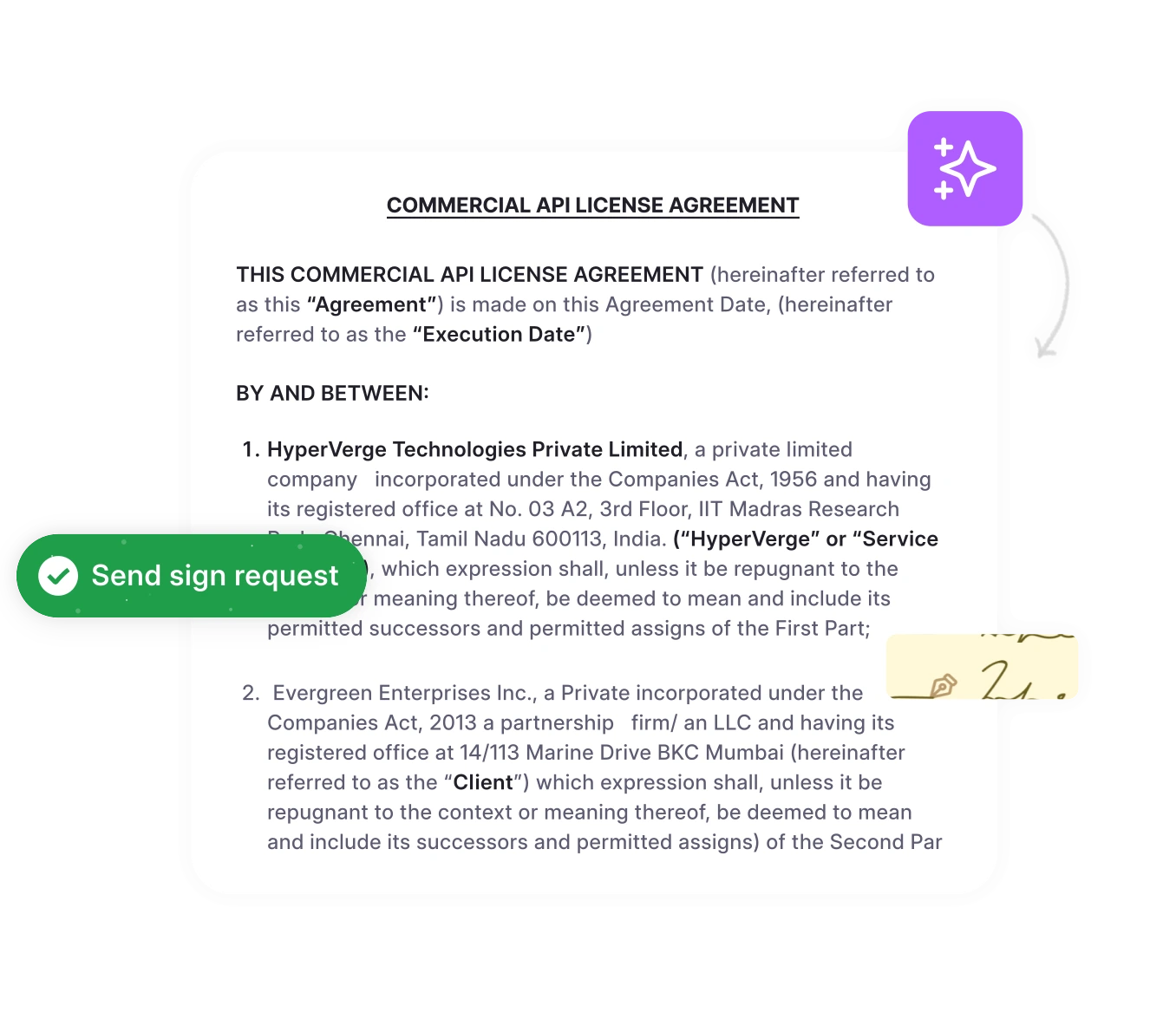If you have ever run an in-house legal department, or just been part of one, you know that one constant question is “How are we doing?”
How are we doing against the budget? How are we doing with turning contracts for the business? How are we doing in the litigation? Or, how are we doing with our compliance efforts?
Traditionally, legal has lacked the data to measure contract performance because of scattered contracts and limited visibility. While other business functions leverage sophisticated analytics and real-time dashboards, legal teams navigate through fragmented systems and manual processes. There’s a glaring need for legal to operate like any other business function with better data and better tools that analyze that data.
In this blog, readers will learn:
- How to define and measure contract visibility
- Why visibility impacts compliance, efficiency, and cost savings
- Common challenges preventing visibility
- Key elements for implementation success
- Department-specific benefits
What is contract visibility?
Contract visibility refers to an organization’s ability to access, view, and track key contract details throughout the contract lifecycle management process.
This approach lacks instant visibility, making it difficult to quickly review contracts or extract critical information when needed. Without an intelligent CLM system, contract management can quickly spiral out of control, creating risk exposure and operational inefficiencies.
Core components
At its core, contract visibility encompasses four essential elements that work together to create transparency across your contract portfolio:
- Accessibility: Instant contract retrieval for authorized users
- Searchability: Rapid location of specific terms and clauses
- Obligation monitoring: Automated tracking of critical dates and commitments
- Status tracking: Real-time visibility into approval workflows of ongoing contracts
These components work together to provide comprehensive visibility into your contract portfolio, enabling informed decisions based on complete, current contract data rather than assumptions or incomplete information.
Contract visibility vs. contract management
While often used interchangeably, contract visibility and contract management serve distinct but complementary functions. Contract management encompasses the entire lifecycle from creation to renewal, while visibility provides the transparency layer that makes effective management possible.
| Aspect | Contract Visibility | Contract Management |
| Focus | Information access | Process control |
| Purpose | Enable informed decisions | Execute contract lifecycle |
| Users | All stakeholders | Primarily legal/procurement |
| Benefit | Transparency | Efficiency |
Why visibility is a prerequisite for effective management: You can’t manage what you can’t see. Organizations attempting contract management without visibility face unnecessary risks, miss opportunities, and waste resources on manual processes.
Why is contract visibility important?
Contract data isn’t limited to party names and payment dates. It includes risk positions, clause trends, cycle times, fallback usage, and term variations. It’s business-critical information hiding in plain sight. However, we often treat this data as a legal admin — something to “handle” rather than something to learn from.
Organizations with superior visibility operate more efficiently, reduce risk exposure, and capture value that others leave on the table.
Compliance and risk reduction
Regulatory compliance requirements continue multiplying across industries. Healthcare organizations navigate HIPAA. Financial services manage GDPR. Technology companies juggle multi-jurisdictional data protection laws. Each regulation demands specific contract provisions that must be tracked and verified.
Read more on Best Contract Compliance Management Software.
Operational efficiency gains
Poor visibility creates friction throughout the contracting process. Sales cycles extend while teams search for approved templates. Procurement systems lack integration with contract repositories, forcing manual data entry. Information silos prevent departments from accessing the contract portfolio data they need.
Cost savings
Revenue protection through renewal tracking prevents expensive service interruptions and preserves favorable pricing. Organizations typically lose 9% of revenue annually through poor contract management—entirely preventable with proper visibility. Accounts payable teams capture early payment discounts when payment terms are visible and automated.
Dispute prevention and resolution capabilities alone justify visibility investments. Quick access to contractual obligations, correspondence history, and amendments accelerates resolution while preserving business relationships. The cost savings from avoided litigation often exceed the entire CLM investment.
Common contract visibility challenges
- Only 13% of legal leaders feel confident they can manage cross-functional risks without creating drag on the business
- 92 minutes average for manual contract review
- 49% of organizations lack defined contract storage processes
The lack of visibility stems from three persistent contract management challenges that plague organizations regardless of size or sophistication.
Scattered contract storage
Contracts typically reside in multiple repositories and systems—shared drives, email attachments, filing cabinets, and legacy document management platforms. This fragmentation creates an incomplete picture of obligations and opportunities.
Legacy contract management issues:
- Inconsistent naming conventions across departments
- No centralized metadata standards
- Limited or no search capabilities in older systems
- Security vulnerabilities with contracts in email
| Stakeholder | What They Can’t See | Business Impact |
| Sales | Legal approval status | Extended sales cycles |
| Procurement | Vendor onboarding progress | Delayed implementations |
| Finance | Payment approval workflows | Cash flow uncertainty |
| Legal | Business-side modifications | Compliance risks |
| Executive | Overall contract health | Strategic blind spots |
Limited search and discovery
Manual contract reviews taking 92 minutes on average represent massive inefficiency. Legal teams report spending 30 minutes of their time simply locating individual contracts. The inability to find specific clauses or terms forces teams to recreate work or proceed without complete information.
Common search challenges:
- No natural language processing capabilities
- Poor metadata and tagging standards
- Inability to search within document text
- Clause-level search unavailable
Lack of real-time status updates
Only 13% of legal leaders feel confident they can manage cross-functional risks without creating drag on the business. This confidence gap reflects the absence of real-time visibility into contract status and obligations.
Problems from manual tracking:
- Stakeholder communication gaps across departments
- Delayed approvals from lack of visibility and poor coordination
- No proactive alerts for upcoming obligations
Key elements of effective contract visibility
There’s a lot to do before jumping to technology. Successful visibility implementation requires thoughtful integration of people, processes, and platforms alignment.
Centralized contract repository
A single source of truth eliminates the chaos of scattered contracts. This central repository with quick access must accommodate all contract types while maintaining consistent organization and security.
Single source of truth requirements:
- Standardized folder structures and naming conventions
- Comprehensive metadata schemas for all contract types
- Version control with complete audit trails
- Integration with existing systems(CRM, ERP, procurement)
- Role-based access controls balancing transparency and security
Advanced search and analytics on contractual obligations
Modern visibility transcends basic keyword search through AI-powered contract analysis that understands context and meaning. Clause-level search capabilities enable instant location of specific provisions across thousands of agreements.
Essential analytics features:
- AI-powered extraction of key terms and obligations
- Natural language search across all contracts
- Performance metrics and reporting dashboards
- Risk scoring, compliance, and contract monitoring
- Automated alerts for critical dates and unusual terms
Automated tracking and alerts
Proactive notification systems prevent missed obligations and capture opportunities. Renewal and expiration notifications arrive weeks in advance. Obligation monitoring ensures performance requirements receive attention. Milestone and deadline management keeps projects on schedule.
Automated alerts transform contract management:
- 30/60/90-day renewal reminders
- Payment milestone notifications
- Compliance deadline tracking
- Risk threshold alerts
- Unusual term identification
Assess your contract visibility
Evaluate your current contract management maturity and reclaim untapped contract potential.
Book a DemoComparing manual vs. automated contract visibility
| Aspect | Manual Process | Automated Visibility |
| Contract Search | 30 minutes average | <2 seconds |
| Renewal Tracking | Spreadsheet | Automated extraction & alerts |
| Compliance Monitoring | Manual | Real-time |
| Risk Assessment | Ad-hoc analysis | Continuous scoring |
| Stakeholder Access | Email requests | Self-serve |
| Version Control | Multiple copies | Single source of truth |
How to implement contract visibility in your organization
Successful implementation requires deliberate planning rather than rushed deployment. Organizations must build a practical plan that prioritizes business outcomes and necessary capabilities.
Legal departments that choose to follow a “big bang” approach and implement advanced contract life cycle management (CLM) solutions and features will limit success and ultimately accomplish only a fraction of the expected value. To get the best return on CLM investments, build a deliberate, practical plan for CLM technology adoption by investigating, documenting and prioritizing desired business outcomes and the necessary operational capabilities to achieve them.
Step 1: Assessment and planning phase
Current state evaluation begins with documenting where contracts currently reside, mapping existing workflows, and quantifying time spent on manual tasks. This baseline provides justification for change and metrics for measuring improvement.
Stakeholder requirement gathering checklist:
- Legal: Faster review and compliance tracking needs
- Finance: Payment visibility and revenue recognition requirements
- Procurement: Vendor analytics and cost optimization goals
- Sales: Approval acceleration and template access needs
- HR: Employee agreement and compliance management
Technology needs assessment balances ideal capabilities with practical constraints including integration requirements, security mandates, change management implications, and budget parameters.
Step 2: Technology selection and implementation
CLM platform evaluation criteria should prioritize usability alongside functionality. Complex systems with steep learning curves face adoption challenges regardless of capability.
Key evaluation factors:
- Ease of use and intuitive interface
- Integration considerations with existing tools
- Scalability for future growth
The user-friendly UI and one of the most supportive teams to help us with the integration and usage makes it one of the best CLM Tools to come across.
Step 3: Change management and adoption
Training and onboarding programs tailored to different user groups accelerate adoption. Legal teams need comprehensive training while business users want simplified workflows for common tasks.
Process standardization priorities:
- Contract request procedures
- Approval workflow rules
- Template usage guidelines
- Naming conventions
- Metadata requirements
Success metrics and KPIs maintain momentum: contract cycle time reduction, search efficiency improvements, user adoption rates, and cost savings demonstrate value while identifying areas for optimization.
Contract visibility by department
Different departments derive unique benefits from enhanced visibility in contract management, creating organization-wide value beyond legal operations.
| Department | Key Benefits |
| Legal | Reduced administrative burdenProactive compliance monitoringInstant precedent access |
| Procurement | Negotiating leverageCost optimization Consolidated supplier contract data |
| Finance | Contract financial data analytics Improved cash flow visibility |
| Sales & Business Operations | Self-serve contract creation and processingAccelerated deal closureAutomated renewal tracking and obligation management |
Quantifying visibility improvements justifies investments and guides continuous improvement. Organizations must establish baseline metrics before implementation, then track progress against specific, measurable objectives.
Gain complete contract visibility?
AI-powered contract visibility to reduce risk and accelerate your business operations.
Book a DemoContract visibility with HyperStart
With HyperStart, you can extract and classify contract data to provide better visibility and reporting on contract metadata, terms and conditions. This is primarily used as a signed contract database and as part of third-party-generated contract negotiation. Advanced capabilities include the ability to train custom AI models.
Key capabilities
- Automated contract review: Redline and review contracts with AI playbooks on a browser native Word-based editor. Compare and identify deviations from precedent language.
- Contract risk analysis: Identify and score risk exposure at the clause and contract level. Visualize risk, liability, indemnification, and financial data on self-serve dashboards.
- Cross-platform data sharing: Real-time collaboration tools ensure all stakeholders and your tech stack for centralized contract data and metadata analysis.
What I like about HyperStart:
Parting thoughts
Contract visibility has evolved from a nice-to-have to a business imperative. Every day without visibility means missed opportunities, accumulated risks, and competitive disadvantage. Organizations must act now to transform contract chaos into strategic agility.
The path forward requires honest assessment of current capabilities, thoughtful technology selection, and committed change management.












